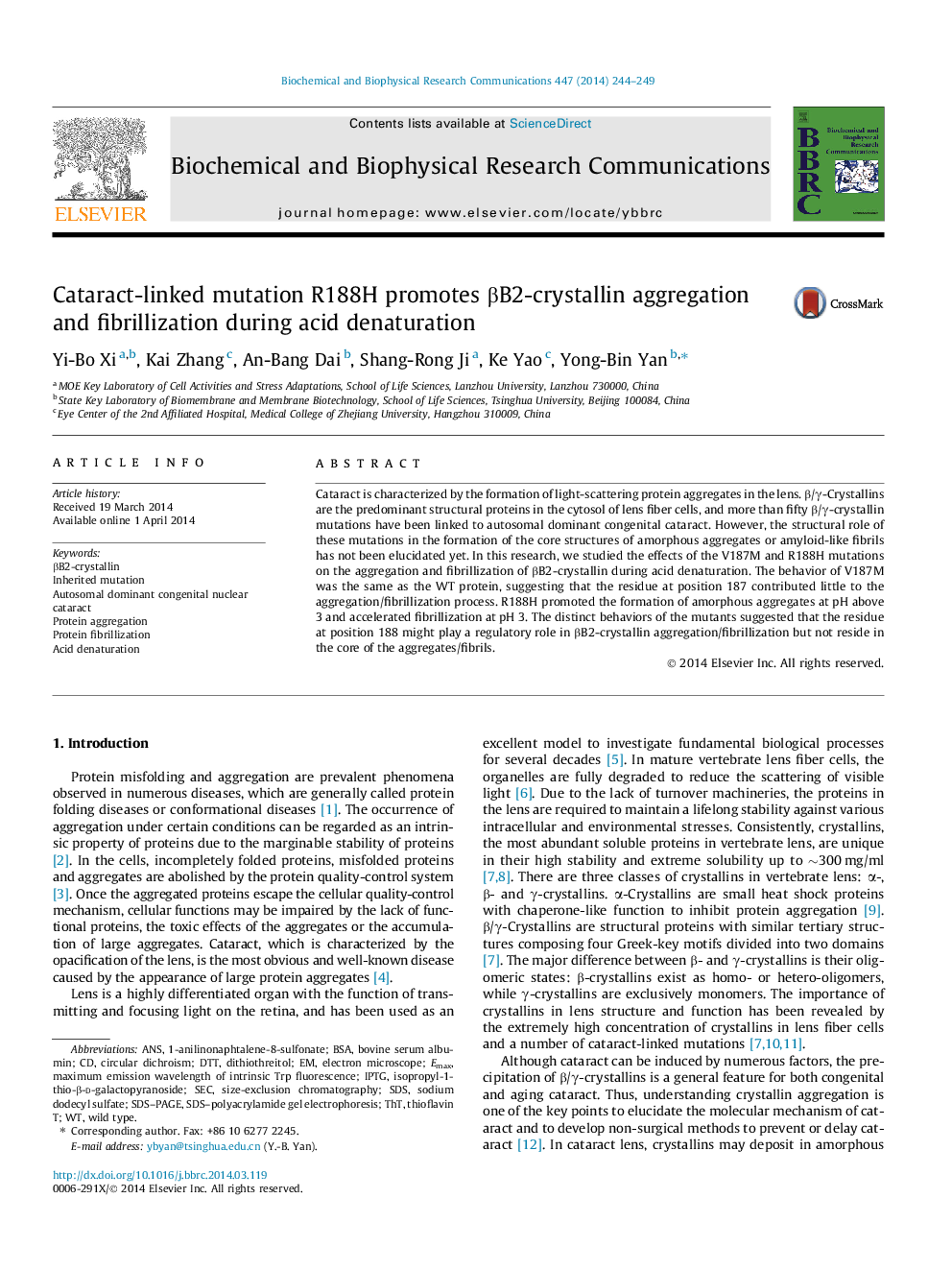| Article ID | Journal | Published Year | Pages | File Type |
|---|---|---|---|---|
| 10755237 | Biochemical and Biophysical Research Communications | 2014 | 6 Pages |
Abstract
Cataract is characterized by the formation of light-scattering protein aggregates in the lens. β/γ-Crystallins are the predominant structural proteins in the cytosol of lens fiber cells, and more than fifty β/γ-crystallin mutations have been linked to autosomal dominant congenital cataract. However, the structural role of these mutations in the formation of the core structures of amorphous aggregates or amyloid-like fibrils has not been elucidated yet. In this research, we studied the effects of the V187M and R188H mutations on the aggregation and fibrillization of βB2-crystallin during acid denaturation. The behavior of V187M was the same as the WT protein, suggesting that the residue at position 187 contributed little to the aggregation/fibrillization process. R188H promoted the formation of amorphous aggregates at pH above 3 and accelerated fibrillization at pH 3. The distinct behaviors of the mutants suggested that the residue at position 188 might play a regulatory role in βB2-crystallin aggregation/fibrillization but not reside in the core of the aggregates/fibrils.
Keywords
SDSSEC1-anilinonaphtalene-8-sulfonateβB2-crystallinIPTGDTTEmaxisopropyl-1-thio-β-d-galactopyranosideBSASDS–PAGEbovine serum albuminSDS–polyacrylamide gel electrophoresisSize-exclusion chromatographyThTprotein aggregationThioflavin TInherited mutationAcid denaturationdithiothreitolcircular dichroismANSsodium dodecyl sulfateElectron microscopewild type
Related Topics
Life Sciences
Biochemistry, Genetics and Molecular Biology
Biochemistry
Authors
Yi-Bo Xi, Kai Zhang, An-Bang Dai, Shang-Rong Ji, Ke Yao, Yong-Bin Yan,
